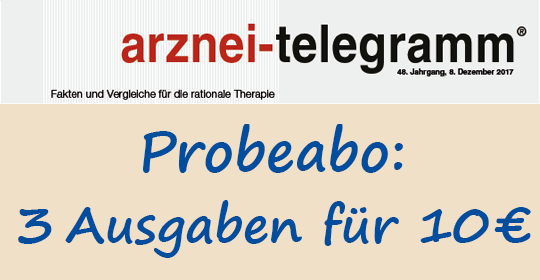Translation of a-t 2022; 53: 35
THERAPY FROM A CRITICAL VIEWPOINT
NIRMATRELVIR PLUS RITONAVIR (PAXLOVID): RELAPSES AFTER THE END OF TREATMENT
Since late January 2022 the protease inhibitor combination of nirmatrelvir plus ritonavir (PAXLOVID) has been conditionally authorised across the EU for the treatment of adult COVID-19 patients with an increased risk of a severe disease progression (a-t 2022; 53: 1-5 and 14) (1). The authorisation is based on the EPIC-HR study which has now been published with 2,246 unvaccinated, high-risk patients in which the substance intake started within five days after the occurrence of symptoms and taken for five days reduced the frequency of COVID-19-related hospitalisation or death within 28 days from 6.31% to 0.77% (relative risk reduction 87.8%; NNT = 19). The viral load in the active treatment group reduced clearly more quickly than in the placebo group (2).
There are now reports from the US of relapses after completing the treatment with nirmatrelvir plus ritonavir. A triple vaccinated 71-year-old patient with known asthma started the five-day treatment with the protease inhibitor combination a day after the symptoms occurred and a few hours after the positive antigen test. The symptoms quickly improved. The carefully controlled viral load dropped. However, four days after discontinuing the substance symptoms developed again. In parallel to this, the virus replication increased and the antigen test, which had become negative in the interim period, was positive again. Omicron subtype BA.1 was originally identified, other pathogens and - by multiple sequencing - other variants of SARS-CoV-2 were able to be ruled out during the further courses of the disease (3).
In an over 60-year-old patient with high blood pressure, obesity and a stable HIV infection, the symptoms of COVID-19 improved within 24 hours upon the start of treatment with nirmatrelvir plus ritonavir. A week later, however, the symptoms returned. The rapid antigen test was clearly positive once again (after the test line had been very difficult to see by the end of treatment) (4).
According to the U.S. Food and Drug Administration (FDA), an increase in viral load was already observed in some patients in the approval study EPIC-HR from around the 10th day of the study, in other words from approx. five days after the end of treatment (5). Based on current information provided by an agency official, an increase in the viral load or positive PCR tests following temporarily negative results occurred in around 1% to 2% of the participants after the end of treatment. This was the case in those receiving the active treatment as well as in those receiving a placebo, so it is as yet unclear whether the phenomenon is due to the treatment. Most of those affected were reported not to have any symptoms at the time of testing positive again on a PCR. According to this there was also no increase in hospital admissions, deaths or development of resistance (6). In the US, studies are now planned on the frequency of relapses following five days of treatment with nirmatrelvir plus ritonavir, on high-risk groups and on the benefits of a longer duration of treatment (7). The FDA, which is also investigating the findings further (7), does not currently believe that there is any evidence for the benefit of a longer duration of treatment or of taking nirmatrelvir plus ritonavir again in case of recurrent symptoms after having completed the treatment (6).
Patients who take nirmatrelvir plus ritonavir for the early treatment of COVID-19 should have the possible return of the symptoms and the possible further increase in viral load with potential further infectiousness after discontinuing treatment explained to them, -Ed.
| (R = randomised study) | ||||
| 1 | EMA: press release of 27 January 2022; https://a-turl.de/thkf | |||
| R | 2 | HAMMOND, J. et al.: N. Engl. J. Med. 2022; 386: 1397-408 | ||
| 3 | GUPTA, K. et al.: Research Square, publ. online on 26 April 2022; https://a-turl.de/52wg | |||
| 4 | SAX, P.: NEJM (Journal Watch), publ. online on 25 April 2022; https://a-turl.de/qm9n | |||
| 5 | FDA: CDER Review, 22 December 2021; https://a-turl.de/mra5 | |||
| 6 | FDA: Updates on Paxlovid for Health Care Providers, 4 May 2022; https://a-turl.de/hcht | |||
| 7 | LANGRETH, R., MULLER, M.: U.S. Seeks „Urgent” Data on Covid Relapses After Using Pfizer’s Drug. Bloomberg, 29 April 2022; https://a-turl.de/yf5b |
© arznei-telegramm (Berlin/Germany), May 2022, protected by copyright laws.
Autor: Redaktion arznei-telegramm - Wer wir sind und wie wir arbeiten
Diese Publikation ist urheberrechtlich geschützt. Vervielfältigung sowie Einspeicherung und Verarbeitung in elektronischen Systemen ist nur mit Genehmigung des arznei-telegramm® gestattet.
